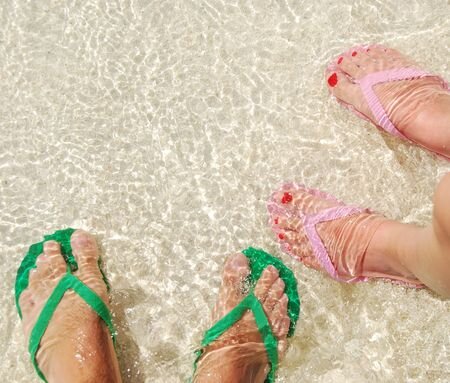5 Tips to Help You Avoid Athlete’s Foot This Summer
The first thing you need to know about athlete’s foot is that you don’t have to be an athlete to get it. This condition is common among people who take part in sports because their feet are often enclosed in sweaty shoes for a long time. But you, too, can get athlete’s foot without ever taking to the field or the court. Today Dr. Ross Cohen of The Foot & Ankle Center of Maryland in Anne Arundel County, Maryland is sharing his 5 tips to help you avoid that uncomfortable athlete’s foot.
1. Keep your feet dry. Pools and showers are not the only moist environments you may find yourself in this summer. If you reach inside your shoes and find that it’s moist or warm, you’re at risk for athlete’s foot. Try to wear breathable cotton socks and remove them as soon as possible. Then towel dry your feet and let them air dry.
2. Apply foot powder. Using an antifungal foot powder can help you avoid athlete’s foot in three ways:
The ingredients found in the foot powder can fight against the fungus that causes flaking, redness, and itching.
It decreases friction by allowing your feet to move without rubbing in between your toes and prevents foot sweating before it begins.
It absorbs moisture that develops in your socks and shoes.
3. Be cautious when in public showers and pools. The athlete’s foot fungus loves warm, moist environments like pools and public showers. It clings to the shower floor and wet pool deck waiting to attach itself to the bottom of your feet. The good news is that preventing athlete’s foot is as easy as wearing flip-flops when walking around the public pool or shower shoes when entering a shower stall.
4. Switch out your socks and shoes. If your sneakers are clammy at the end of the day, let them dry out for a full 24 hours before putting them on again. Moisture can spread down into the padding of the sole and create an ideal breeding ground for athlete’s foot fungus.
Try to switch out the shoes and socks you wear to do your chores, hike, bike, walk the dog, or any other activity that causes your feet to perspire. One of the worst possible things you can do is go for a run, come home, and take off your shoes, and leave your socks on. Warm, wet socks are like a playground for athlete’s foot fungus.
5. Avoid others who have athlete’s foot. Athlete’s foot fungus is highly contagious, so if you reside with or encounter someone you know has athlete’s foot, use extreme caution to keep yourself safe.
You should also keep your feet covered whenever you walk in common living areas, and never share sheets, shoes, socks, blankets, or towels with anyone who is already infected.
If you get athlete’s foot even after following these safeguards, there’s no need to worry. Dr. Ross Cohen of The Foot & Ankle Center of Maryland in Glen Burnie, Maryland can treat the fungus and have you back to your normal activities in a few weeks.
